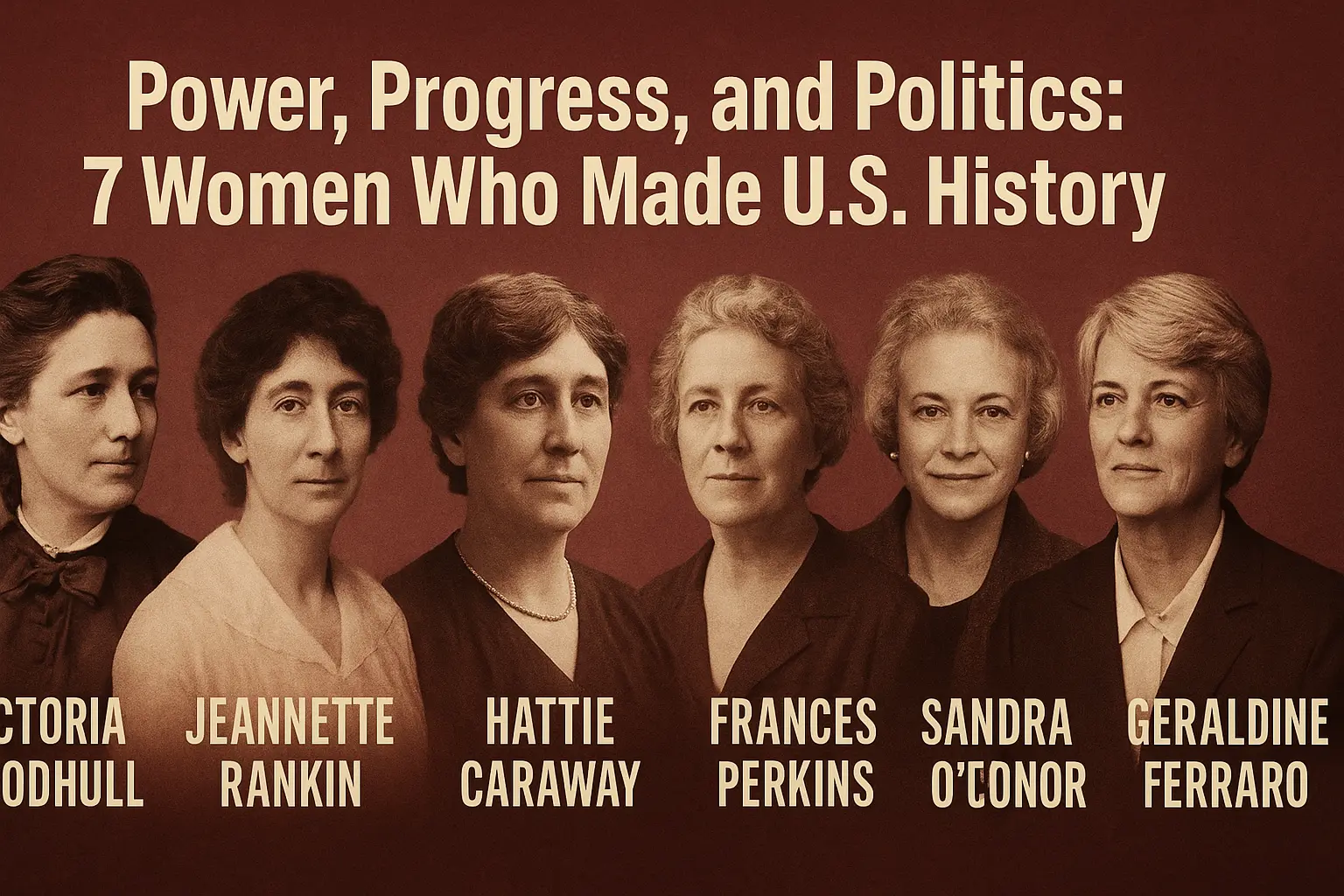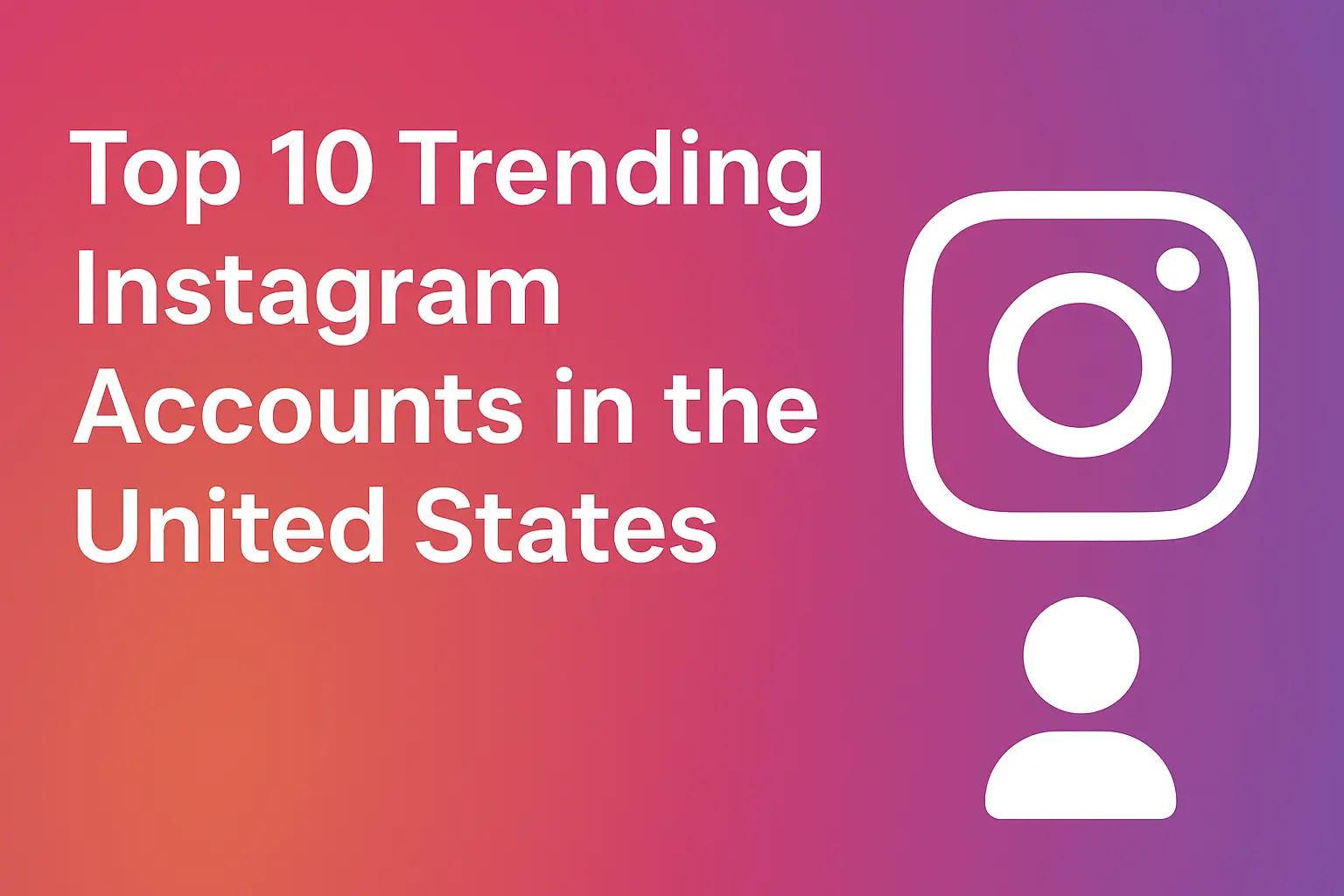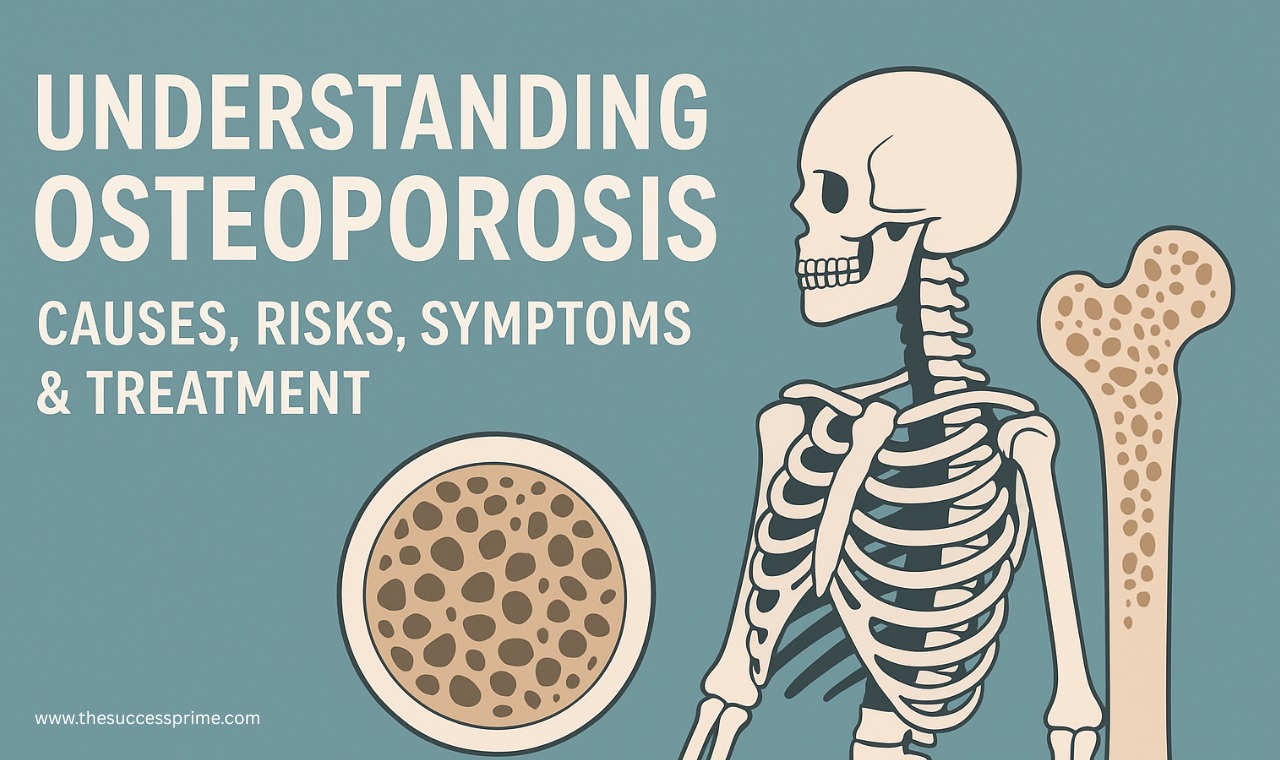A Woman’s Place in Power: Celebrating 7 Political Pioneers of America
Hillary Clinton became the first female presidential nominee by a major U.S. political party on July 28, 2016, at the Democratic National Convention. Even though she did not win the president in the November election, her candidacy was a huge advancement and a turning point that caused America’s long-standing “glass ceiling” to fracture once more.
Her success rested on the shoulders of many pioneering women who had already broken down barriers. Clinton’s historic nomination and subsequent generations of women in politics were made possible by these significant events, which included the first female members of Congress, the first female Cabinet member, and more.
Here are seven groundbreaking moments that shaped the path leading to that pivotal point in U.S. history.
First Female Presidential Candidate: Victoria Woodhull (1872)
Victoria Woodhull became a fearless advocate for equality and change more than half a century before American women were granted the right to vote. A newspaper publisher, stockbroker, and vocal supporter of women’s rights, Woodhull made history in 1872 when she announced her intention to run for president of the United States under the Equal Rights Party.
Despite being sometimes called eccentric—she was once a wandering fortune teller—Woodhull’s bold support of social reform and women’s suffrage attracted national notice. She launched an innovative campaign, but she didn’t earn any electoral votes, and Ulysses S. Grant was reelected. Nevertheless, Woodhull paved the way for other fearless women to enter politics, such as Margaret Chase Smith, Shirley Chisholm, and Belva Lockwood, who went on to become president.
First Woman in Congress: Jeannette Rankin (1916)
Jeannette Rankin of Montana became the first woman elected to the U.S. House of Representatives in 1916, breaking a significant barrier before women were allowed to vote nationally. Two years prior, Rankin had been instrumental in gaining women’s voting rights in her native state while serving as legislative secretary for the National American Woman Suffrage Association.
Her influence went beyond gender norms. Rankin, a devoted pacifist, is still the only member of Congress who voted against American participation in both World Wars I and II. Despite serving just two nonconsecutive terms (1917–19 and 1941–43), her impact persisted. Nancy Pelosi followed in Rankin’s footsteps decades later, becoming the first female Speaker of the House in 2007.
First Female U.S. Senator: Hattie Caraway (1931)
Although Georgia’s Rebecca Felton served as the first female senator for barely two days in 1922, her nomination was primarily symbolic. Hattie Caraway of Arkansas made history in 1931 when she was elected as the first female member of the U.S. Senate.
Caraway exceeded expectations by winning a special election and then winning reelection twice after being first appointed to finish her late husband’s term. She gained recognition for her quiet tenacity and legislative attentiveness as an ardent supporter of Franklin D. Roosevelt’s New Deal.
In the 1992 “Year of the Woman,” four women—Barbara Boxer, Carol Moseley Braun, Dianne Feinstein, and Patty Murray—joined the Senate, instantly increasing the number of female senators. Caraway’s bravery served as an inspiration for subsequent female senators.
First Female Governor: Nellie Tayloe Ross (1924)
In 1924, Nellie Tayloe Ross was elected as the first female governor in American history in Wyoming, the first state to allow women to vote. Her win occurred soon after her husband, Governor William Ross, passed away unexpectedly, but she soon established herself as a self-sufficient leader.
Ross continued to serve the public even after losing reelection in 1926. She was named Director of the U.S. Mint by President Franklin D. Roosevelt in 1933, a position she maintained for twenty years.
Ma Ferguson of Texas was elected governor a few days after Ross, but it wasn’t until Ella Grasso was elected in Connecticut in 1974 that a woman held the highest position in her state without replacing a spouse, ushering in a new era of political independence.
First Female Cabinet Member: Frances Perkins (1933)
Frances Perkins, the first woman to be named to the U.S. Cabinet, was part of the New Deal team that Franklin D. Roosevelt put together when he took office in 1933. Perkins’s involvement in New York’s reform movements molded her years of activism for workers’ rights and safety, which she used as Secretary of Labor.
Her influence was enormous. Perkins contributed to the creation and execution of important New Deal initiatives that changed the American labor market, such as the Social Security Act and the Fair Labor Standards Act.
She cleared the path for other female cabinet members including Madeleine Albright, the first female secretary of state, and Janet Reno, the first female attorney general.
First Female Supreme Court Justice: Sandra Day O’Connor (1981)
In 1981, Sandra Day O’Connor became the first female member of the U.S. Supreme Court, fulfilling a campaign pledge made by President Ronald Reagan. A new era for women in the judiciary began when the Senate unanimously approved O’Connor’s nomination. O’Connor was a former state senator and judge from Arizona.
O’Connor, who is renowned for her moderate conservatism and fair thinking, was a crucial swing vote in several significant judgments over 25 years. In 1993, Ruth Bader Ginsburg joined her, and O’Connor greeted her with warmth, saying, “I was so glad to have company.”
Sonia Sotomayor (2009) and Elena Kagan (2010) contributed to the Court’s increased female representation by the late 2000s, carrying on O’Connor’s legacy.
First Major-Party Vice Presidential Nominee: Geraldine Ferraro (1984)
Following Victoria Woodhull’s historic campaign, women were only listed on presidential tickets as small party contestants with little possibility of winning electoral votes for decades. This was drastically altered in 1984 when Democratic presidential candidate Walter F. Mondale chose New York congressman Geraldine Ferraro as his running mate, a daring and historic decision.
This choice was a significant advancement for women in American politics since it was the first time a woman had ever been nominated for vice president by a major political party. (Interestingly, Dianne Feinstein, the mayor of San Francisco at the time, was also given consideration for the position.)
In the 1984 election, Ronald Reagan and George H.W. Bush handily beat the Mondale-Ferraro ticket despite the campaign’s symbolic strength. Even after leaving Congress, Ferraro continued to be a well-known public personality who promoted women’s rights and political engagement.
Despite two Senate bids in the 1990s, Ferraro never ran for office again, but her nomination cleared the path for later female leaders. More than 20 years later, Hillary Clinton’s 2016 presidential nomination furthered the route Ferraro had helped pave, while Sarah Palin was the Republican choice for vice president in 2008.
A Legacy of Progress
From Sandra Day O’Connor’s historic judicial appointment to Victoria Woodhull’s daring presidential campaign, these women all knocked down boundaries that had appeared insurmountable. They have demonstrated that women have a place in the House, the Senate, the Governor’s Mansion, the Cabinet, and the Supreme Court. Their bravery, vision, and leadership have changed American politics and encouraged other women to take the initiative.
FAQs: Power, Progress, and Politics – 7 Women Who Made U.S. History
Q1. Who was the first woman to run for President of the United States?
Victoria Woodhull, a representative of the Equal Rights Party, became the first female presidential candidate in 1872. Even though she didn’t win any electoral votes, her candidacy was revolutionary for women in American politics and served as an inspiration for later generations of female leaders
Q2. Who was the first woman elected to the U.S. Congress?
Four years before women were granted the right to vote worldwide, in 1916, Jeannette Rankin of Montana was elected as the first female member of the U.S. House of Representatives. Additionally, she was the only Congresswoman to vote against America’s participation in both World Wars I and II.
Q3. Who was the first female U.S. Senator?
In 1931, Hattie Caraway of Arkansas was elected as the first female member of the U.S. Senate. Caraway made history as a persistent advocate of New Deal legislation after winning a special election and two successive reelections after being first appointed following the death of her husband.
Q4. Who was the first female governor in U.S. history?
In 1924, Nellie Tayloe Ross of Wyoming became the first female governor, making history in the first state in the union to allow women to vote. President Franklin D. Roosevelt then nominated her to the position of Director of the U.S. Mint, where she remained for twenty years.
Q5. Who was the first woman appointed to the U.S. Cabinet?
In 1933, Frances Perkins was appointed Secretary of Labor by President Franklin D. Roosevelt, making her the first female cabinet member. She was a major contributor to the development of the New Deal, which included initiatives like the Fair Labor Standards Act and the Social Security Act.
Q6. Who was the first woman to serve on the U.S. Supreme Court?
President Ronald Reagan chose Sandra Day O’Connor as the first female justice of the Supreme Court in 1981, making history. Later justices like Ruth Bader Ginsburg, Sonia Sotomayor, and Elena Kagan were made possible by her fair judgment and moderate views, which made her an important member of the bench for more than 25 years.
Q7. Who was the first woman nominated for Vice President by a major political party?
When Geraldine Ferraro was chosen as Walter Mondale’s running mate on the Democratic ticket in 1984, she became the first female nominee for vice president by a major party. Despite the Mondale-Ferraro campaign’s defeat, her campaign broke down boundaries and served as an inspiration for other female candidates, such as Hillary Clinton (2016) and Sarah Palin (2008).
Q8. What is the significance of Hillary Clinton’s 2016 presidential nomination?
At the 2016 Democratic National Convention, Hillary Clinton became the first female presidential nominee of a major American political party. Her candidacy represented a significant turning point in the protracted fight for women’s political equality in America, even if she did not win the president.
Q9. How have women changed American politics?
From Sandra Day O’Connor’s judicial service to Victoria Woodhull’s presidential campaign, these groundbreaking women shattered barriers in every sector of government with bravery, tenacity, and vision, demonstrating that leadership knows no gender. Women are still motivated by their legacy to take decisive action in determining the destiny of the country.
Q10. What is the overall message of “Power, Progress, and Politics: 7 Women Who Made U.S. History”?
The article celebrates the groundbreaking achievements of women who redefined U.S. politics, governance, and leadership. It highlights how each milestone — from the first female candidates to Supreme Court justices — contributed to breaking America’s “glass ceiling” and empowering generations to come.
Read Also: America’s Top 5 Electric Motorcycles You Should Consider in 2025-26












Leave a Reply